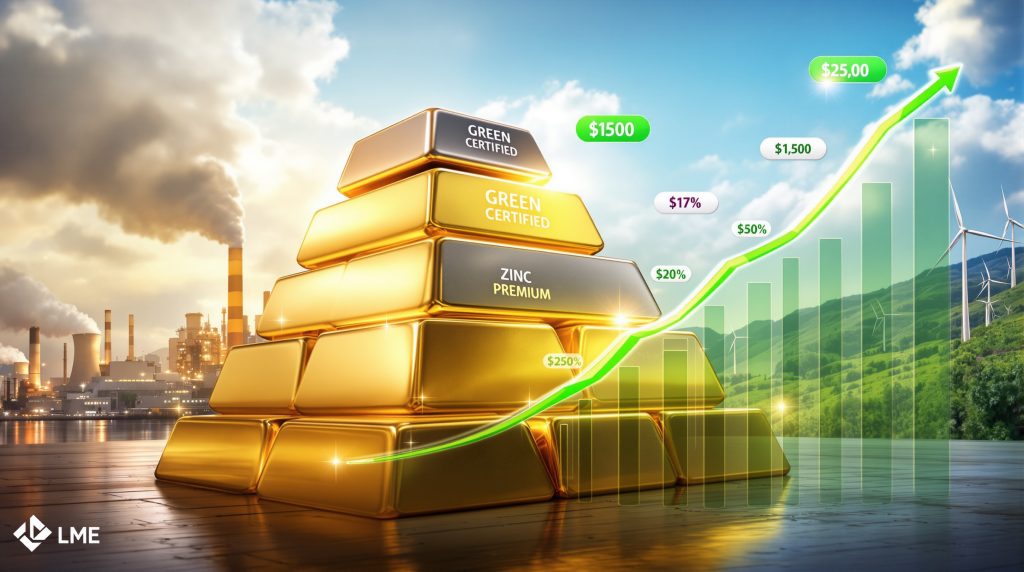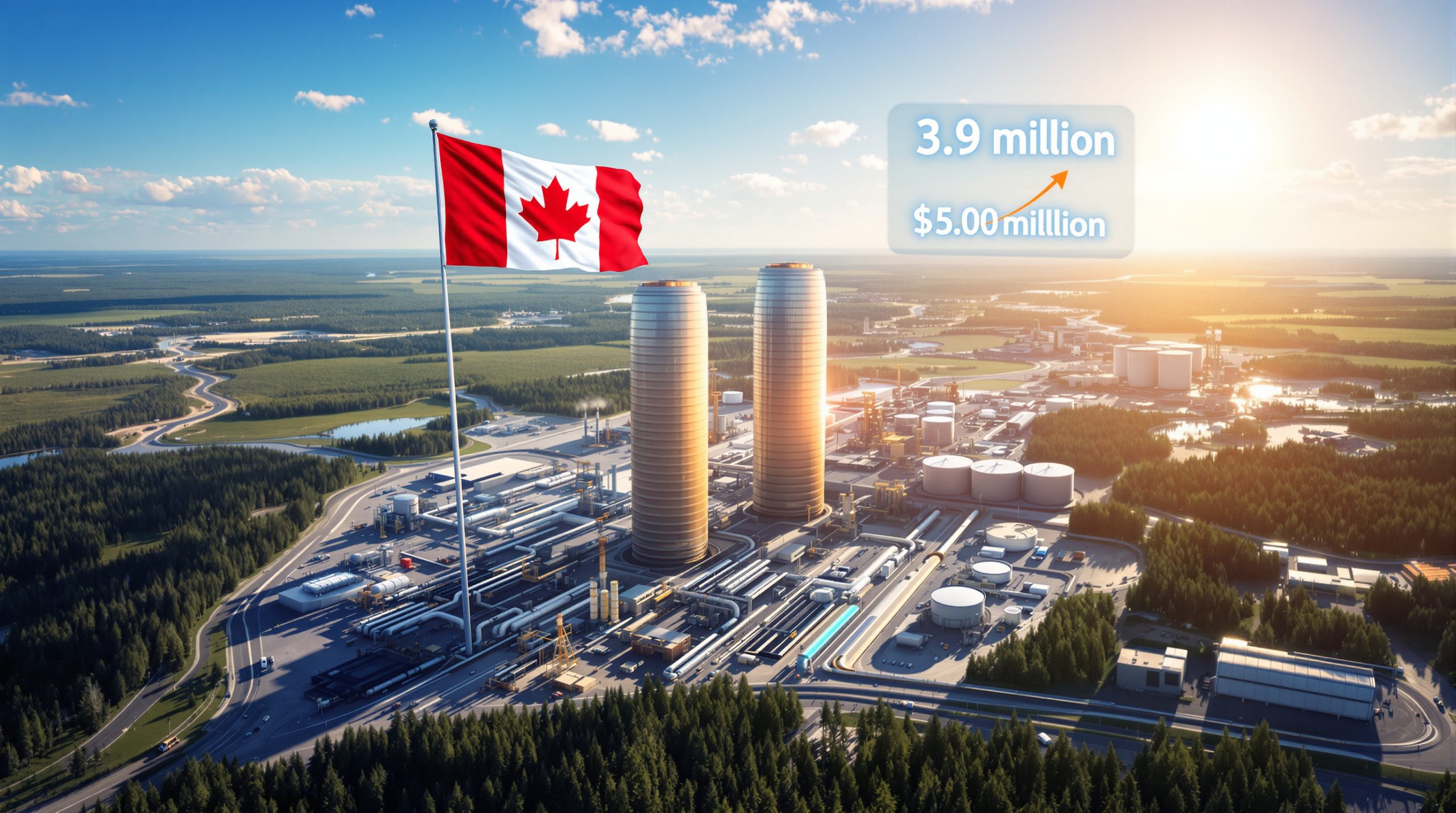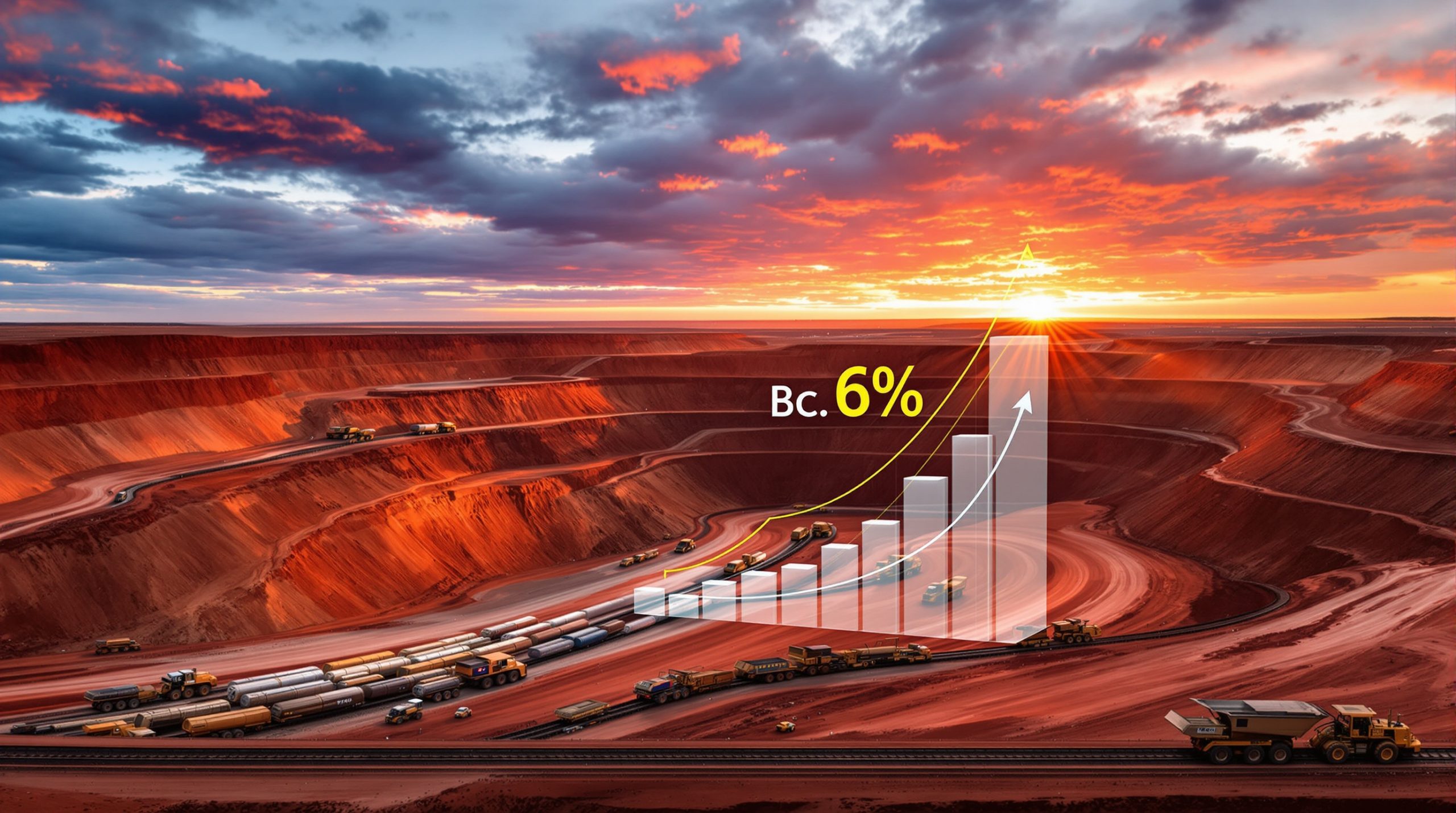Premium Pricing for Sustainable Metals: The Evolution of Green Metal Markets
The Sustainability Value Proposition
Sustainable metals are commanding premium prices in today's market based on their reduced environmental footprint, responsible sourcing practices, and alignment with global decarbonisation economic benefits. These premiums reflect the substantial investments producers make in cleaner technologies, renewable energy implementation, and sustainable mining transformation—all of which significantly reduce carbon emissions compared to conventional production methods.
The value proposition extends beyond environmental benefits to include better labor practices, community engagement, and long-term resource management—creating a comprehensive sustainability package that forward-thinking buyers increasingly recognize as worth the additional cost.
Market Forces Reshaping Metal Valuation
Traditional metal pricing has historically been driven solely by supply-demand fundamentals and production costs. Today, sustainability credentials are emerging as a critical third dimension in price formation. This paradigm shift represents one of the most significant changes in industrial metal markets in decades.
Industrial buyers with ambitious corporate sustainability goals are increasingly willing to pay premiums for metals that help them meet their own environmental commitments, reduce Scope 3 emissions, and satisfy growing regulatory requirements for supply chain transparency. This willingness varies significantly by sector and end use, with consumer-facing industries typically leading adoption.
As the London Metal Exchange CEO Matthew Chamberlain noted in October 2025, "If there isn't a sustainability premium, I think we would be absolutely happy to publish a number of zero. And I think it's really important knowing that there isn't a premium as knowing that there is one." This market-driven approach emphasizes that premium pricing will ultimately reflect genuine buyer demand rather than aspirational goals.
Regulatory and Investor Pressure
Regulatory frameworks like the European Union's Carbon Border Adjustment Mechanism (CBAM) are creating tangible financial incentives for sustainable metal sourcing. The CBAM entered its transitional phase in October 2023, with full implementation including financial adjustments beginning January 1, 2026—creating an urgent timeline for metals importers to address embedded emissions.
Metals producers and consumers face increasing pressure from investors who increasingly factor sustainability metrics into investment decisions. Major financial institutions now incorporate ESG performance into lending decisions, while institutional investors increasingly favor companies with verifiable green credentials, creating a ripple effect throughout metal supply chains.
The metals and mining sector accounts for approximately 7-9% of global greenhouse gas emissions according to McKinsey & Company, making it a priority target for critical minerals energy transition and creating strong regulatory incentives for premium sustainable products.
How Are Sustainable Metal Premiums Being Established?
The LME's Groundbreaking Premium Initiative
The London Metal Exchange is implementing a pioneering framework to establish transparent premiums for sustainably produced metals. Starting in Q1 2026, the exchange will enable premium pricing for aluminum, copper, nickel, and zinc that meet rigorous sustainability criteria, with a particular focus on carbon footprint reduction and responsible production practices.
This initiative represents a significant evolution in the LME's 148-year history as the world's oldest and largest industrial metals market. Rather than creating separate contracts for sustainable metals—which the exchange rejected due to concerns about fragmenting market liquidity—the LME opted for a premium pricing mechanism that overlays existing contracts, maintaining the efficiency of core metal trading while enabling sustainability value recognition.
Digital Platforms and Price Discovery Mechanisms
The LME is partnering with digital platform Metalshub to establish market-driven premiums based on actual transactions of sustainable metals. This approach allows the market to determine appropriate premiums while maintaining the efficiency of the core metal contracts.
Frank Jackel, managing director of Germany-based Metalshub, explained in October 2025: "This is aligned with our vision that more and more trading will in the long run be happening over digital platforms and spot trading venues like ours. Markets need to become more efficient and less old-fashioned when you trade over the phone and by email." The platform has already demonstrated proof-of-concept by trading 488 metric tons of low-carbon nickel since March 2024.
The premium pricing initiative will be managed by a new, independent entity—Commodity Pricing and Analysis Limited—based in Dubai. This structure ensures independence in premium calculations while maintaining connection to the established LME ecosystem. If insufficient trades occur on Metalshub, this entity will calculate premiums using bids, offers, and assessments to ensure continuous market information.
Verification and Certification Standards
For metals to qualify for premium pricing, producers must meet stringent sustainability criteria verified by recognized third-party certification bodies. The LME's approach requires verification based on internationally recognized methodologies, creating a credible framework for distinguishing truly sustainable products.
| Metal | Key Sustainability Requirements | Verification Standards |
|---|---|---|
| Aluminum | Maximum carbon footprint thresholds, recycled content requirements | ASI Performance Standard |
| Copper | Emissions limits, responsible mining practices | Copper Mark, IRMA |
| Nickel | Carbon intensity below industry average | ISO 14064, GHG Protocol |
| Zinc | Environmental management systems, emissions reduction | ISO 14001, IZA standards |
Each of these certification standards brings specific methodologies and requirements, ensuring that sustainable premiums reflect genuine environmental performance rather than marketing claims. The integration with established certification bodies like the Aluminium Stewardship Initiative (ASI) leverages existing industry frameworks while creating financial incentives for their broader adoption.
What Benefits Do Sustainable Metal Premiums Create?
Economic Incentives for Green Production
Premium pricing creates a direct financial incentive for producers to invest in decarbonization technologies and sustainable practices. This market-based approach may prove more effective than regulatory mandates alone by aligning profit motives with environmental goals.
The transparency of publishing premiums—even when those premiums may be zero for some metals—provides critical market intelligence. This transparency allows producers to make informed investment decisions based on actual market demand rather than assumptions, potentially accelerating the industry's transition toward more renewable energy transformations where genuine willingness to pay exists.
For producers, premium pricing can help justify the substantial capital expenditures required for renewable energy transition, process electrification, and other decarbonization technologies by creating a clear revenue stream tied directly to sustainability performance.
Market Transparency and Standardization
By establishing clear, market-driven price differentials for sustainable metals, premium pricing mechanisms bring transparency to previously opaque sustainability valuations. This standardization helps buyers make informed decisions and enables producers to quantify the return on sustainability investments.
The LME's approach of publishing transparent premium data helps normalize the concept of sustainability as a value dimension in metals markets. By making these premiums visible alongside conventional price information, the initiative integrates sustainability into mainstream market thinking rather than treating it as a separate, specialized consideration.
This transparency also helps prevent greenwashing by creating financial consequences for false or exaggerated sustainability claims. When premiums are tied to verified performance against established standards, the incentive to invest in genuine improvements rather than marketing claims increases significantly.
Supply Chain Resilience and Risk Mitigation
Metals produced through sustainable practices often come from operations with stronger environmental management systems, better community relations, and more stable regulatory compliance—all factors that reduce supply disruption risks. Premium pricing recognizes this added value in supply chain resilience.
Sustainably produced metals typically involve more transparent supply chains with better traceability and accountability. This transparency reduces reputational risks for buyers and can provide greater assurance of ethical sourcing—increasingly important considerations for consumer-facing brands and companies with public sustainability commitments.
As regulatory requirements for supply chain due diligence increase globally, premium pricing for verified sustainable metals creates a market mechanism that rewards compliance and proactive risk management, potentially reducing future regulatory exposure for both producers and consumers.
Which Metals Are Leading the Sustainability Premium Trend?
Aluminum: The Frontrunner in Green Premiums
Aluminum has emerged as the leader in sustainable metal premiums due to its extraordinary energy intensity. Aluminum production accounts for approximately 2% of global electricity consumption according to the International Aluminium Institute, making carbon footprint reduction particularly valuable and visible to end users.
The stark difference between aluminum produced with renewable energy versus coal-powered production creates clear environmental differentiation that buyers can understand and value. This clear contrast has helped establish more robust premium differentials compared to metals with less dramatic production emissions profiles.
The existence of established certification frameworks like the ASI Performance Standard has also accelerated premium development by providing widely-recognized criteria for what constitutes "sustainable aluminum"—an essential foundation for market-based pricing mechanisms.
Copper: Essential for the Energy Transition
As the fundamental metal for electrification, copper's sustainability credentials are increasingly important. Responsibly produced copper with lower carbon intensity is beginning to attract premiums, particularly from electric vehicle manufacturers, renewable energy developers, and electronics companies with ambitious sustainability targets.
The inclusion of copper in the LME's premium pricing initiative launching in Q1 2026 reflects growing market recognition of sustainability differentiation in this critical metal. According to Frank Jackel of Metalshub, the addition of copper to their trading platform is expected to significantly boost trading volumes of sustainable metals.
The energy transition paradox—where copper demand increases to enable renewable energy and electrification while traditional production methods remain carbon-intensive—creates particular urgency around sustainable copper sourcing, potentially accelerating premium development and influencing future copper price prediction.
Nickel and Zinc: Building Momentum
Sustainable nickel is gaining traction with battery manufacturers seeking to reduce the carbon footprint of electric vehicles. Nickel has been at the forefront of the LME's sustainability initiative, with Metalshub already trading low-carbon nickel since March 2024—demonstrating market appetite for differentiated products.
Zinc with verified sustainability credentials is attracting interest from galvanizers and die-casters serving construction and automotive markets. The metal's inclusion in the LME's premium pricing initiative reflects growing recognition of sustainability differentiation potential, though premium development remains at an earlier stage compared to aluminum and copper.
Both metals benefit from inclusion in the LME's comprehensive approach, which will provide market-validated premium information starting in early 2026. This visibility may accelerate buyer education and premium development by creating a transparent benchmark for sustainability value.
How Are End Users Responding to Sustainable Metal Premiums?
Automotive Sector Leadership
Automotive manufacturers have been early adopters of premium-priced sustainable metals, driven by consumer demand for greener vehicles and regulatory pressure to reduce lifecycle emissions. Vehicle manufacturers face particularly intense scrutiny of their environmental footprints, creating strong incentives to source more sustainable materials despite cost implications.
The electric vehicle revolution has heightened focus on supply chain sustainability, with manufacturers recognizing that the environmental benefits of EVs can be undermined by carbon-intensive material sourcing. This awareness has accelerated interest in sustainable metals, particularly aluminum for lightweight structures and copper and nickel for electrical components and batteries.
However, as LME CEO Matthew Chamberlain noted in October 2025, "Many end users have resisted paying more for sustainable products and for some metals there may not be a premium." This cautionary perspective highlights the ongoing challenge of translating sustainability commitments into actual purchasing behavior with financial consequences.
Electronics and Renewable Energy Demand
Consumer electronics companies and renewable energy developers are increasingly specifying sustainable metals in their procurement requirements. Both sectors face consumer and investor pressure to demonstrate comprehensive sustainability throughout their supply chains, not just in end-product performance.
Solar panel manufacturers in particular have recognized the contradiction in using carbon-intensive materials to produce clean energy generation equipment. This awareness has driven interest in low-carbon aluminum for framing and sustainable copper for wiring to enhance the overall environmental profile of renewable energy products.
The growing importance of product lifecycle assessments in environmental marketing claims has highlighted materials sourcing as a significant factor in overall sustainability performance, creating incentives to source premium sustainable metals despite cost implications.
Construction Industry Adoption
The construction sector is gradually embracing sustainable metals, particularly for green building certifications like LEED and BREEAM. These certification systems award points for using materials with lower environmental impacts, creating a quantifiable benefit for using sustainable metals that can help justify premium costs.
Adoption remains concentrated in showcase projects and high-profile developments where sustainability credentials create marketing value. Mass adoption in standard construction faces greater price sensitivity, highlighting the importance of the LME's market-based approach to determining genuine willingness to pay across different application segments.
Regulatory developments like building carbon footprint regulations in some jurisdictions are creating additional incentives for sustainable material sourcing in construction, potentially accelerating premium development as compliance requirements become more stringent.
What Challenges Must Be Overcome for Premium Pricing to Succeed?
Standardization and Verification Hurdles
For sustainable metal premiums to function effectively, the market requires consistent, credible standards for what constitutes "sustainable" production. Current challenges include varying methodologies for carbon accounting, inconsistent boundaries for lifecycle assessments, and differing verification requirements across certification schemes.
The proliferation of sustainability standards creates confusion for buyers and additional compliance burdens for producers who may need multiple certifications to satisfy different customer requirements. The LME's initiative helps address this by recognizing multiple standards within its framework, but further consolidation and harmonization would benefit market development.
The cost and complexity of verification itself presents challenges, particularly for smaller producers who may struggle to afford certification processes despite having sustainable practices. Streamlining verification while maintaining credibility remains an important challenge for market development.
Market Liquidity and Price Discovery
Establishing reliable premiums requires sufficient transaction volume and market participation. Early-stage sustainable metal markets may face liquidity challenges until a critical mass of producers and consumers engage in the premium pricing mechanisms.
The limited trading volume reported by Metalshub—488 metric tons of low-carbon nickel since March 2024—highlights the nascent stage of market development. While this demonstrates proof-of-concept, substantially higher volumes will be needed to establish robust price discovery across multiple metals and sustainability tiers.
The LME's decision to reject separate sustainable contracts specifically due to concerns about fragmenting liquidity in the core metal markets demonstrates the delicate balance between market development and maintaining efficient price discovery. The premium approach aims to thread this needle by creating sustainability differentiation without compromising existing market functions.
Cost-Benefit Considerations
The fundamental question for sustainable metal premiums is whether end users will consistently pay enough of a premium to justify the additional production costs. This balance varies by metal, production method, and end-use application, creating a complex landscape for investment decisions.
As Matthew Chamberlain acknowledged, many end users have resisted paying more for sustainable products, highlighting the gap between sustainability aspirations and procurement realities. The LME's transparent approach to publishing premiums—including zero premiums where appropriate—will provide critical market intelligence on this willingness-to-pay question.
The establishment of Commodity Pricing and Analysis Limited in Dubai provides an alternative price discovery method if transaction volumes on Metalshub prove insufficient, using bids, offers, and assessments. This fallback mechanism ensures continued market information even during early development phases when transaction volumes may be limited.
How Might Sustainable Metal Premiums Evolve in the Future?
Tiered Premium Structures
As markets mature, premium structures are likely to become more sophisticated, with tiered pricing based on different levels of sustainability performance. This evolution would recognize that sustainability exists on a spectrum rather than as a binary characteristic, allowing for more nuanced market signals.
For aluminum, distinct premium levels might develop for "low carbon" (4-8 tonnes CO₂e/tonne), "very low carbon" (2-4 tonnes CO₂e/tonne), and "ultra-low carbon" (<2 tonnes CO₂e/tonne) products, reflecting the significant differences in production methods and environmental impacts within the broad "sustainable" category.
This tiered approach would create intermediate incentives for producers making incremental improvements, rather than requiring transformational change to realize any premium benefit. Such stepped incentives could accelerate industry transformation by rewarding progress at multiple levels.
Integration with Carbon Markets
Future premium pricing mechanisms may integrate with carbon markets, potentially allowing producers to monetize carbon reductions through both premium pricing and carbon credit generation. This dual revenue stream could accelerate investment in decarbonization technologies by improving overall return on investment.
The relationship between explicit carbon pricing through mechanisms like the EU CBAM and market-based sustainability premiums will likely evolve as both systems mature. Their potential interaction—whether complementary or overlapping—will influence the overall financial incentives for sustainable production.
As carbon accounting methodologies become more standardized and widely adopted, the integration between carbon markets and metal premiums may become more seamless, potentially creating more sophisticated pricing mechanisms that directly translate emissions performance into price differentials.
Expansion to Additional Metals
While aluminum, copper, nickel, and zinc are leading the premium pricing movement, the concept is likely to expand to other metals. Tin, lead, and specialty metals like lithium and cobalt are potential candidates for future premium pricing mechanisms as sustainability becomes increasingly important across all metal supply chains.
The inclusion of battery metals like lithium and cobalt would be particularly significant given their critical role in energy transition technologies and the intense scrutiny of their supply chains from both environmental and social perspectives. Establishing premium mechanisms for these metals could help address concerns about sustainable sourcing for battery production.
The potential expansion of the LME's initiative to additional metals would create a more comprehensive sustainable metals marketplace, potentially accelerating adoption by allowing buyers to address a broader range of materials through a consistent premium approach.
FAQ: Premium Pricing for Sustainable Metals
What defines a "sustainable" metal worthy of premium pricing?
Sustainable metals typically meet specific criteria including verified lower carbon emissions (usually 30-50% below industry average), responsible sourcing practices, strong environmental management systems, and positive community impacts. Certification by recognized third-party organizations provides credibility to these claims.
For the LME's premium pricing initiative, qualifying metals must meet "maximum carbon footprints and third-party sustainability standards, based on internationally recognized methodologies" to be eligible for trading on the Metalshub platform with sustainability premiums.
Different metals have different sustainability criteria reflecting their unique production processes and environmental impacts. Aluminum certification typically focuses heavily on energy sourcing and carbon footprint, while copper and nickel standards often include broader criteria around mining practices and community engagement.
How significant are the premiums for sustainable metals?
Current premiums vary by metal and market segment. Market analysts observe that premiums typically range from minimal differentials in price-sensitive applications to more significant premiums in high-visibility consumer products where sustainability marketing value is higher.
Premium levels also vary significantly by metal type, with aluminum—the most energy-intensive major metal—typically commanding the highest sustainability premiums due to the substantial emissions difference between coal-powered and renewable-powered production.
The LME's transparent approach to publishing actual transaction-based premiums starting in Q1 2026 will provide much-needed market data on genuine willingness to pay across different metals and market segments, helping to clarify current premium ranges based on verifiable market activity.
Who pays for these sustainability premiums?
Initially, premium-priced metals are being purchased by companies with strong sustainability commitments, particularly in automotive, electronics, packaging, and construction sectors. These companies often have public commitments to reduce their carbon footprint and are willing to absorb modest cost increases to achieve these goals.
Consumer-facing brands with sustainability as part of their value proposition show greater willingness to pay premiums as they can potentially pass costs through to environmentally conscious consumers or offset them through marketing value and brand enhancement.
Industries facing regulatory pressure around environmental performance, such as automotive manufacturers subject to fleet emissions regulations, also show higher adoption rates as sustainable material sourcing becomes part of their compliance strategy.
Are sustainable metal premiums likely to increase or decrease over time?
Market dynamics suggest premiums may initially increase as demand for sustainable metals outpaces supply. However, as more producers invest in sustainable production methods, increasing the availability of low-carbon metals, premiums may eventually stabilize or decrease while remaining sufficient to incentivize continued investment in sustainability.
The trajectory will likely differ by metal type and application, with high-demand, consumer-visible applications potentially maintaining stronger premiums while commodity-type applications see more pressure toward cost parity as sustainable production becomes mainstream.
As LME CEO Matthew Chamberlain noted in October 2025, for some metals there may not be a premium at all, and the exchange is "absolutely happy to publish a number of zero" where market transactions don't support premium pricing. This transparency will be crucial in establishing realistic expectations for premium development over time.
Further Exploration
Readers interested in learning more about premium pricing mechanisms for sustainable metals can explore the London Metal Exchange website, which offers information about their initiatives to establish transparent pricing for responsibly produced metals.
The LME published a discussion paper on October 13, 2025, detailing the methodology it plans to use to determine premium prices, providing valuable insights into the mechanics of sustainable metal premium calculation.
For those interested in specific sustainability standards, organizations like the Aluminium Stewardship Initiative (ASI), Copper Mark, and the Initiative for Responsible Mining Assurance (IRMA) provide detailed information on their certification criteria and verification processes.
Disclaimer: The premium pricing mechanisms for sustainable metals are still developing, and actual premium levels may vary significantly from projections. Investment decisions based on anticipated sustainability premiums should consider the evolving nature of these markets and the potential for changes in both regulatory frameworks and buyer preferences.
Want to Get Ahead of the Next Major Mineral Discovery?
Discover how the proprietary Discovery IQ model provides instant, real-time alerts on significant ASX mineral discoveries, giving investors a crucial market advantage before news becomes widespread. Explore historic examples of exceptional discovery returns by visiting the Discovery Alert discoveries page today.




